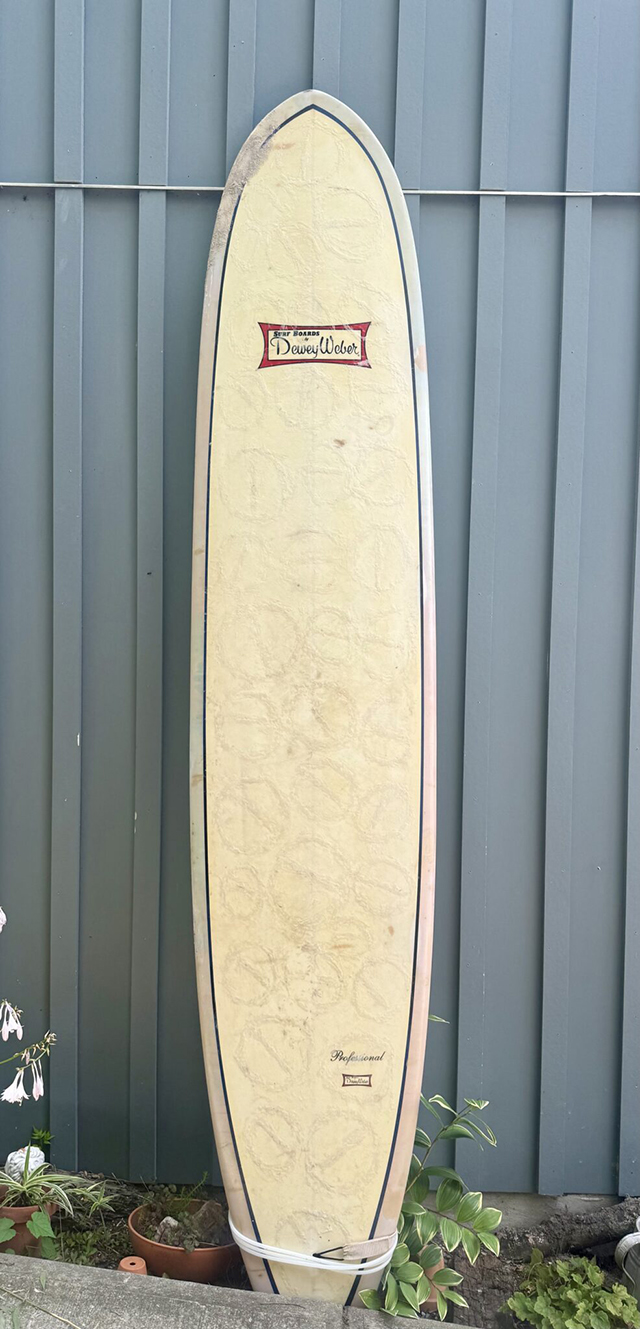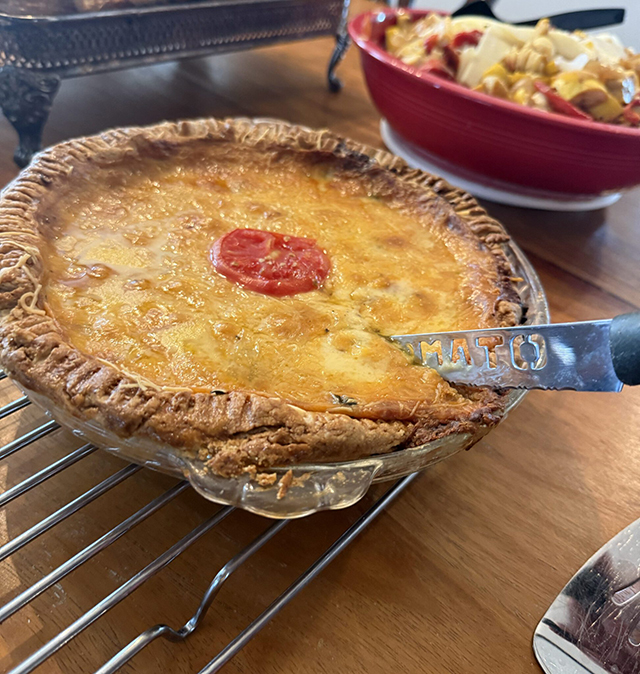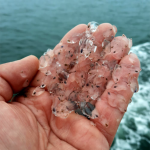Potato Fest 2025 is Saturday, Oct. 11, 12–4 pm, at the Beach 91st Street Community Garden. This community event is a joyful celebration of the beloved root vegetable—and a chance to get together with friends and neighbors in the garden to share a meal of (mostly) potatoes. The dishes are home-cooked by community volunteers—thank you to everyone cooking!!

Expect hands-on, potato-inspired fun and activities: a hot potato showdown, a potato art craft, a Mr. and Ms. Potato Head play corner, and an education station to explore the fascinating journey of the potato through history.
The soundtrack is a mash-up— flutist Danielle Hanna (@louise_0405), vocalist Erin Moon (@erinmoonmusic) and Mikal Hameed (@rebaroque) keeping the beats sweet in between. I asked each musician to share about their work:

Re Baroque, it makes art you look at and listen to. Mikal Hameed’s large-scale, high-design works fuse visual art, music history, and modern furniture into functional mixed-media sculptures that restore music to a shared, out-loud experience.
Born to musicians, Hameed grew up immersed in sound. His father, Young Jessie, was a jazz/rock/R&B singer-songwriter who recorded the original “Mary Lou,” later covered by Steve Miller Band, Bob Seger, and Frank Zappa. His mother, Barbara Jean Prince, was also a musician; they met gigging. His uncle’s group, Otis Day and the Knights, appeared in the 1978 film Animal House. Preserving the communal joy of music is baked into his DNA.
Raised in South Central Los Angeles, Hameed’s creative path ran from graffiti and punk bands to spoken word, taking him to the Apollo Theater in 1999. He soon moved to Brooklyn and built a production-design career on music videos for clients including Jay-Z, Mike Myers, Moby, Sting, and Liza Minnelli.
In the hip-hop tradition of remix, Hameed reworks cultural hardware—iconic boomboxes, DJ turntables—into new forms with new purpose. His powered speaker sculptures invite audience participation, transforming viewers into listeners and making sound a public, collective event.

Rockaway native Danielle Hanna is a flutist, saxophonist, and composer based in Queens. She is currently pursuing her B.Mus. in Music Education and Composition at the Conservatory of Music at Brooklyn College, also in the Macaulay Honors program, where she was awarded a full-tuition scholarship. As an undergraduate, Danielle has performed in various Brooklyn College ensembles, such as the Wind Ensemble, Orchestra, and the Brooklyn College Musical Theater Collective. She was involved in the Macaulay Theater Club, where she served as Music Director/Conductor for its fall production of “Bells Are Ringing” (2024), and she is president of the award-winning Macaulay Musicians’ Collective. Recently, her work “Mood Meter” for piano quintet was performed by Conservatory students at the Winter Composers Concert (2025), and her newest piece, “Dust & Moonlight” for flute and piano, was performed at the May Composers Concert (2025).

Erin DeBarber (Erin Moon) is a musician, carpenter, community organizer, and mixed media artist based in Franklin, Maine. Her music is rooted in storytelling and transformation, exploring themes of love, depression, resilience, and relocation. Blending indie folk with shades of space rock, Erin’s lo-fi sound is anchored by clever lyrics, raw emotion, and melodies that linger.
Her conversational style invites listeners into her world… as she uses songwriting to make sense of the world and life’s changes and contradictions.
Erin began writing music during the pandemic and embraces the joy of being an adult beginner. In 2022, she left a career in advertising, moved to Maine, and bought a fixer-upper cabin in a coastal town. After studying carpentry, she now works full time as a house painter and builder, keeping her hands busy and her mind free to focus on music.
We have a wonderful day planned for everyone. I hope to see you in the Garden this Saturday! Bring your friends, bring your appetite, and bring your love of potatoes! This is a free event. All are welcome at Potato Fest 2025!
Far from a quiver, yet I need to let everyone know that I now have a Dewey Weber Professional, 9’2.” My second board! Thank you, Kristeli! My friend and previous rider of the vintage classic called the board “The Fairy” for its beautiful, pastel, and cream waves in the glassing. A new nickname has come about for me, though — Big Mamma. I’m a small person, and she is a big board! My mid-length is an 8’6” Faktion. The extra 8 inches of length and heavy fiberglass are a whole lot more board to carry to the beach and maneuver in the water.

“With his trademark red trunks, platinum blond hair, and a definite attitude, Dewey defined the archetype of the Southern California surfer.” —Drew Kampion, Surfing Magazine, Image source: @deweywebersurf
I’m happy to say, so far, so good! She glides on those glassy waist-high waves and feels amazing. The board’s square tail feels stable and ideal for the Rockaway summer ankle-slappers. The learning curve has been mostly about nose-diving and trying to find my sweet spot on the board—where to place my chest as I’m paddling for a wave. I’m finding the board a bit hard to turn once I’m up, but hey, I’m up! My friends in the water say this is a normal challenge when adjusting to a longboard. And this makes sense with my little nose-dive prob. I’m told if I pop up and turn right away, instead of going straight for a few seconds, it will help. Eating it on a 9’2” has more consequences than on a smaller board, so I’m practicing this.

The Dewey Weber Professional was first released in 1968, and production stopped on this hand-shaped noserider in 1988. My feeling, based on the color styling and dings, is that my board has gone through some incarnations and it’s a later model. You can’t see the stringer, and one of the logos seems to have been removed for a repair and then glassed back on. This board has lived some lives, for sure. I like the mystery she holds. sequence, one wave at a time.
“It’s nice to see a Dewey Weber in the water.” My friend mentioned the board might attract some attention from the older gentlemen in the lineup. After a quick chat with one of these dudes, I realized I need to do my homework on Dewey Weber. I can’t ride a classic and not know about the shaper.
I hit the books—starting with deweyweber.com—where I first learned about Dewey Weber’s legendary innovations in board design.
“He was the first surfboard manufacturer to give a model name (i.e., Performer) to designate a particular surfboard design. Dewey revolutionized surfing with the first ‘cutaway’ fin (the infamous hatchet fin), the introduction of the first removable fin unit, and his implementation of the first ‘milling’ machine, which was the forerunner of computer-assisted design. He screen-printed his logo on one of the first colored T-shirts made by Towncraft.”
A little more surfing the net, and I learned that Dewey Weber defined a new, unique, flashy style of longboard surfing, earning his place as a surfing icon—“The Little Man on Wheels.” He was an athlete, a champion yo-yo player, and a wildly successful businessman. He was a drinker. And after personal losses and a major surfing injury, his course changed. Dewey passed away at the young age of 54 in 1993. He left behind a legacy that keeps getting rediscovered by new surfers like me.
What started in 1968 somehow ended up under my feet. That’s surfing. That’s the soul. Three years in, and I’m still counting…
Instagram
Now that I’ve had a bit of time to process the past few months, I’m ready to share that I started a new job at the Department of Education, and it’s been a major shift. The opportunity came up, and it was supposed to be “easy”—out by 3 pm, all the holidays, and allow me time to still work as a graphic designer. It provides supplemental income, stability, and health insurance. The last few years of chasing freelance checks, unable to find a full-time job, the mortgage, and all the life things were just too much.
I started on March 10th. I’m a Family Associate, supporting the school psychologists with Individual Education Programs (IEPs). What I didn’t expect was also helping with morning arrival—essentially being a crossing guard—and then covering two lunch periods with spilled milk, aerial chicken nuggets, and the kids.
I felt like I plunged into the middle of the ocean without knowing how to swim.
First thing in the morning, I put on a neon yellow reflective vest, welcome the kids to school, and make sure they don’t get hit by a car. It’s a lot of smiling, talking to parents, and being “on.” A switch from being home for the past 10 years with my three cats, whom I sometimes talked to when I felt lonely. All kinds of weather – I get cold easily, so that’s been an adjustment—and one day my feet were soaked from rain, all day long. I’ve learned to be more prepared and resilient.

My mind is blown by how difficult it is to work in a school—I’m humbled and have a new respect for everyone involved in educating children, in all their roles. And thank you, teachers.
You live and you learn.
During the day, I use fax machines, a paper shredder, and a PC with non-user-friendly software—new things that send my nervous system into the red zone. It’s funny because I’m tech‑savvy (at least after the 2000s), but I couldn’t figure out how to use the buttons on the gigantic copy machine. One day, I needed to scan documents into Sesis, and it seemed there was a dead mouse lodged in the machine. It was a big thing in the main office. It ended up being a dead bird between the glass and the screen of the nearby window. But still.
A lot of tasks come my way verbally, so I have to remember and write them down, but then I can’t read my handwriting. I feel my brain has adapted to keyboards and forgotten how to use a pen. I have a filing cabinet with those plastic colored slip divider things that I have now labeled.
I photocopied pictures of my head one morning when no one was around. It was liberating.
I take a break from the low-tech world for lunch—not my lunch, though, the kids’— honestly, it might be the hardest part of my day. The cafeteria is sensory overload: bright lights, loud voices, whistles, and kids in overdrive — gummy bears, Minecraft lunch boxes, tiny dolls, and Pikachu—who I now know is a squirrel. I slip on mystery sauce almost every day. I’m managing meltdowns and big emotions from little people. I am trying to resolve disputes meaningfully. I aim to treat each situation with respect, not dismiss them just because they’re over stolen Takis.
This represents future conflicts, right? And how they’ll learn to handle them starts now. I’m trying to use common sense and kindness, I have no training. I have no idea what I’m doing. Why was I hired? I’m mostly learning from the kids, observing and taking in as much information as I can. My mind is blown by how difficult working in a school is—I am humbled. I’m fried by 3 p.m.
Teachers—thank you.
After lunch, we go outside for recess. There’s one girl in 4th period who does forward rolls almost the whole time. I have a whistle and hate to use it. I can’t manage to get 26 eight-year-old kids into two straight lines with no talking. Sign’s up! I call them “my adorable blob.” Because our line is never straight. I’ve lost my temper many times and then apologized. The kids appreciate being treated like real humans. The children like me. They said they will miss me over the summer, and I miss them too.
So much soccer! One day, the ball went over the fence, and the kids begged me to get it. Of course I would. I jogged around in my flat, beige, pointed shoes. Hubert urged me to throw it over. I couldn’t make it. Caesar rallied me on! A crowd of boys gathered, all giving instructions and rooting me on, “Ms. Paula, higher!” After many tries, I finally got the soccer ball over the tall chain‑link fence, and the kids roared and cheered for me! They taught me to keep trying, never give up. My eyes welled with tears, and I wanted to cry. Maybe this is why I am here?
I haven’t learned how to swim yet, but I’ve gotten really good at treading water.
Note: The important things happening in my life, I push aside and delay writing about because it all feels too big. I get caught up thinking, I need to include every detail, and then tell myself I’ll write it when I have more time. So I have several half‑written “life” columns like this one that I haven’t shared. It’s just easier to write about peanuts and potatoes.
This week I decided to just go for it and get something down about this new chapter. I’ve missed details—it’s not exactly how I want it, but here it is. I can always say more another time. There’s more time than you think.
by Paula D.
on October 1, 2025 3:16 pm in Food / Recipes
I have wonderful news. I’m predicting a fantastic tomato harvest this year! The NYC Zone 7 tomatoes are going to be spectacular due to all this rain we’ve been schlepping through. It is a juicy, divine blessing for our tomatoes. Let us be grateful.

NYC Zone 7 tomato harvest is gonna be spectacular this year due to the consistent rain this summer, and when your tomatoes are ripe and ready, make my decadent tomato pie.
One of the biggest problems for heirloom tomatoes is inconsistent watering — we get busy, we forget, the soil dries up, and next thing you know, our precious fruits have those little black bottoms (blossom end rot). No glory there. Consistent moisture means the plants can really stretch out — leaves lush, flowers bright and deep, expansive roots. We’ll see more vigorous growth, fewer weird cracks from sudden gulps of water, and bigger clusters of juicy red tomatoes.
With this news, I’d like to share again with you my Glorified Tomato Pie Recipe. Make this “wow factor” dish with your lush, homegrown Rockaway Beach tomatoes!
The Glorified Tomato Pie
Ingredients:
For the rustic crust:
1 2/3 cups flour
3/4 cup cornmeal
1 tablespoon sugar
2 teaspoon salt
1 cup salted butter
7 to 8 tablespoons ice-cold heavy cream or milk
For the pie:
3 large tomatoes
7 oz gruyere cheese (shredded)
8 oz mozzarella cheese (shredded)
About 16 basil leaves (whole)
One small white onion
3-4 tablespoons mayo (vegan works great too)
3 eggs
½ tablespoon red pepper flakes
½ tablespoon fresh ground pepper
½ tablespoon salt
Additional salt for tomato roasting
Directions:
For the rustic crust:
- Mix together flour, cornmeal, sugar, and salt in a medium bowl. Slice tablespoon-sized pieces of room-temperature butter into the dry mixture using a fork or pastry blender until it resembles small balls. Gradually add the heavy cream to the mixture, 2 tablespoons at a time. Use your hands to combine and form a ball.
- If the dough is warm, refrigerate it for 15 minutes or until it is no longer sticky and is suitable for rolling.
- Flour your surface (I use wax paper) and roll out the dough. Trim the edges with a butter knife for a clean look. Flip the wax paper over the pie dish and shape the dough. I discovered that curling the crust edge over in a rolling way looks nice and prevents the crust from breaking off at the edge. Refrigerate and cover with plastic wrap for at least a half hour. Will keep uncooked up to 3 days in the fridge.
For the pie:
- Preheat the oven to 350°F. Slice the tomatoes .25 inches thick and lay them on a salted baking sheet. Salt both the top and bottom of the slices. Cook for 20 minutes on the bottom rack to remove excess liquid.
- In the meantime, chop the onions and combine in a medium-sized bowl with the shredded mozzarella and Gruyère cheese. Add the red pepper, salt, and black pepper. Drop in 2 eggs and mix well.
- Layer the pie crust with the following: a layer of tomato, a layer of the cheese mixture, and then a layer of basil leaves. Repeat this two more times.
- Crack and scramble the last egg. Using a pastry brush, coat the crust edge with the egg for a golden finish.
- Cook the pie uncovered at 375°F for 30 minutes or until golden brown. Let the pie cool for at least 45 minutes. This is important as it needs time to firm up. Eat and Enjoy!
What do tomatoes have to do with the 4th of July? Absolutely nothing — but I’ll wish everyone a wonderful Independence Day weekend anyway!































